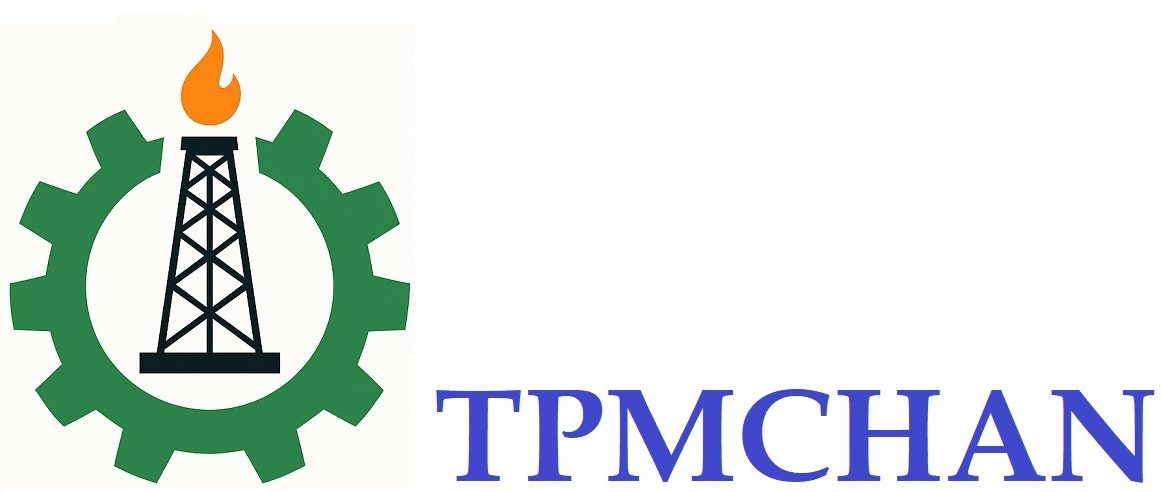Indirect Thermal Desorption Plant



Rotary Kiln Dimensions
1600 mm Diameter x 14.500 mm length
Processing Capacity:
Light Oil Waste: 5 -7.5 TPH
Heavy Oil Waste: 1.5 – 2.5 TPH
Rotary Kiln Dimensions
2000.mm Diameter x 14.500mm length
Processing Capacity:
Light Oil Waste: 7.5 -10 TPH
Heavy Oil Waste: 2.5 – 4.5 TPH
Rotary Kiln Dimensions
2500.mm Diameter x 17.500mm length
Processing Capacity:
Light Oil Waste: 10-15 TPH
Heavy Oil Waste: 5 – 7.5 TPH
INDIRECT THERMAL DESORPTION PLANT (ITDP)
Next-Generation Technology for Turning Waste Into Value
The Indirect Thermal Desorption Plant (ITDP) developed by TPMC HAN is an advanced thermal treatment system designed to separate and recover oil, water, and solid fractions from oily sludge, contaminated soil, tank bottoms, and hydrocarbon-impacted waste.
The primary mission of this system is clear:
👉 Restore and clean the soil
👉 Recover valuable hydrocarbons
👉 Treat and safely discharge water
This technology ensures full compliance with global environmental standards while delivering significant economic value through recovered products.
🌟 A Simplified, More Efficient Version of Classical Distillation
Traditional crude-oil distillation separates 5–6 different hydrocarbon fractions such as gasoline, diesel, and jet fuel.
This requires large, complex refinery infrastructure.
The ITDP applies the same fundamental principle in a much simpler, safer, and more efficient way:
The system separates only three main phases:
🟫 Solid Phase (Clean Soil)
🟡 Oil Phase (Recovered Hydrocarbons)
💧 Water Phase (Condensate)
This simplicity makes the process:
✔ More stable
✔ More predictable
✔ Lower in operating cost
✔ Highly efficient
✔ Suitable for both stationary and mobile installations
🔥 Why Indirect Heating? The Safest and Most Reliable Method
In direct heating systems, flame contact can cause:
❌ Explosion risks
❌ Uncontrolled combustion
❌ Product loss
❌ Higher emissions
The ITDP eliminates all of these risks by using indirect heating.
With Indirect Thermal Desorption:
No flame or exhaust gas touches the material
The internal environment remains oxygen-free (anaerobic)
Hydrocarbons do not burn – they vaporize
Oil recovery is significantly higher
Safety is maximized
Temperature is precisely controlled
The kiln is heated by burners capable of using:
✔ Natural gas
✔ Fuel oil
✔ Syngas
✔ Propane
This gives the operator major flexibility in different site conditions.
🔄 Continuous Operation – The Core Advantage of TPMC HAN ITDP
While many older TDU systems operate in batch mode, the ITDP is engineered as a fully continuous (24/7) processing system.
Key benefits of continuous operation:
✔ No start-stop heat losses
✔ Stable temperature profile
✔ Higher daily throughput
✔ Lower fuel consumption
✔ Steady product quality
✔ Minimum downtime and maintenance
This design significantly increases efficiency and makes the ITDP a leading solution in global markets.
⚙️ PROCESS FLOW – PROFESSIONAL & TRANSPARENT
1️⃣ Feeding – Screening – Air-Lock System
Oily sludge is fed into the hopper using a wheel loader
A 50×50 mm vibrating screen removes oversized debris
Twin screw feeders deliver the material to the transfer screw
Dual-valved feed hoppers create a perfect air-lock
Oxygen entry is prevented → safe & stable anaerobic operation
This section ensures both system safety and operational continuity.
2️⃣ Indirectly Heated Rotary Kiln – The Heart of the System
The rotating drum continuously renews the surface of the material
Heat (450–550°C) vaporizes hydrocarbons without combustion
Oil + water vapors are carried to the recovery section
Clean soil exits the kiln and moves to the cooling unit
This is the core thermal transformation stage.
3️⃣ Clean Soil Cooling & Discharge
The decontaminated solid exits through an air-locked discharge bunker
It enters the Hopper Mixer Cooler (HMC)
Water is injected to achieve fast, direct-contact cooling
Dust suppression is simultaneously achieved
The clean soil is now suitable for environmental reuse.
4️⃣ Vapor & Emission Treatment – Fully Compliant With Global Standards
✔ Quench Scrubber (120–130°C)
– Cools vapors using oil
– Removes heavy hydrocarbons
– Sends recovered oil to the oil-water separator
✔ Shell & Tube Heat Exchanger (20–30°C)
– Final cooling
– Condensation of lighter hydrocarbon vapors
✔ Mist Eliminator & Drain Section
– Removes fine aerosol particles
– Ensures clean condensate output
✔ Thermal Oxidizer (1000–1200°C)
– Destroys all remaining hydrocarbons
– Achieves >99.9% destruction efficiency
– Meets EPA, EU, and international emissions standards
This system guarantees the cleanest and safest emission output.
🧠 FULLY AUTOMATED OPERATION – ZERO HUMAN ERROR
The entire plant is controlled via a PLC–SCADA automated panel, offering:
Temperature controls
Burner management
Safety interlocks
Flow & pressure monitoring
Alarms and emergency shutdown system
Real-time data and process visualization
Operators only monitor; machines handle the process.
This enhances both operational safety and cost efficiency.
🟩 KEY ADVANTAGES OF THE ITDP
✔ Continuous operation (true 24/7 processing)
✔ Maximum safety with indirect heating
✔ High hydrocarbon recovery
✔ Low operating and maintenance costs
✔ Compliance with global environmental regulations
✔ Modular design – mobile or stationary
✔ Long equipment lifetime
✔ High reliability under harsh field conditions
🔧 TYPES OF WASTE THE SYSTEM CAN PROCESS
Tank bottom sludge
Oily soil
Refinery sludge
Drilling mud (OBM / WBM)
Industrial oily waste
Transported sludge mixtures
Hydrocarbon-contaminated solids
Disposal of hazardous chemicals in municipal wastewater treatment plants
The ITDP is a universal solution for oil-contaminated solids worldwide.
🛢️ FINAL PRODUCTS
🟫 Clean Soil
Environmentally safe and reusable.
🟡 Recovered Oil
Economically valuable; can be reused or sold as fuel.
💧 Condensate Water
Clear, treated water ready for safe discharge.
🚀 **WHY TPMC HAN?
Because We Engineer for Real Field Conditions.**
The ITDP was designed by engineers with years of hands-on oilfield and industrial experience, not just theoretical design teams.
This results in a system that is:
More durable
More efficient
Easier to maintain
More reliable under harsh conditions
A solution engineered by real operators, for real operators.
